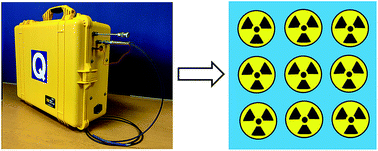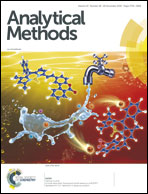Mobile mass spectrometry for water quality monitoring of organic species present in nuclear waste ponds
Abstract
This work uses a portable mass spectrometer (MS) for lab-based water quality monitoring of organic compounds, which are present in highly toxic nuclear waste ponds. This is due to a number of effects that such species have on storage of radioactive waste. The MS system that was used for the tests consists of a quadrupole mass spectrometer (QMS) housed in a mobile vacuum system with dual sample inlet options. The QMS uses a triple filter analyser for high performance and sensitivity to ppb levels in water. Mass spectra were obtained using a membrane sample inlet for the following organic substances: acetone, acetophenone, cyclohexanone, isophorone, 1-pentanol, 1-heptanol, propionaldehyde, ethyl acetate, ethyl propionate and odourless kerosene. Calibration curves were obtained for selected mass fragments for each of the compounds tested and showed excellent linearity (R2 ≥ 0.9835 in all cases). Spectra were also obtained for compound mixtures for acetone, cyclohexanone, acetophenone and isophorone as well as for 1-pentanol and 1-heptanol. All the tested substances were successfully detected with their spectral peaks clearly distinguished. Rise and fall membrane response times are given for specific compounds including their limits of detection (LOD), which are within the current demands of the nuclear industry.



 Please wait while we load your content...
Please wait while we load your content...